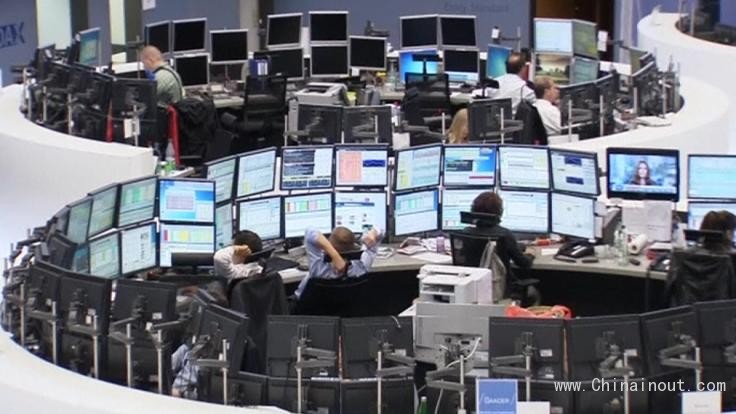
毫无疑问,当前美国经济局面要比大洋对面的欧洲更为乐观。
1.国内生产总值
18个国家使用欧元作为货币的欧元区,公布的第二季度GDP增长0%。而之前第一季度增长为0.2%。美国经济第一季度情况比较糟糕,下降了2.1%。但紧随其后的是第二季度强劲增长4%,并且很多证据表明其经济走强的趋势,而不是走弱。(更多全球资讯浏览中国进出口网)
2失业率
美国失业率是6.2%,而在欧元区为11.5%,其中希腊为27.2%,西班牙为24.5%,处于经济衰退所造成的高失业的困境。这些国家的青年失业率高于50%,而在美国是13%左右。众所周知,通常在欧洲解雇员工很件难事, 这意味着如果在美国裁员很常见的话,欧元区的这个比率会更高。
3通货膨胀
在美国,通货膨胀大约2%,企业通过给工人获得加薪,让他们提前应对小幅的价格上涨。在欧洲通货膨胀率是0.4%,,接近通货紧缩——通常是比通货膨胀更为糟糕。经济通货紧缩,未来的货币将大大贬值,债务成本随着时间的推移越来越高。

4央行刺激
美国联邦储备理事会(美联储,fed)结束量化宽松政策,明年可能会开始提高利率,减少对经济的负面影响。这就是随着经济的升温美联储应对策略。相比之下,欧洲中央银行仍在考虑是否应该开始量化宽松政策,欧洲似乎再次被美国落下。
5股票
今年迄今为止美国道琼斯工业股票平均价格指数和欧洲差距不大。但在过去的五年中美国道琼斯工业指数的飙升了79%,而道琼斯欧洲仅上升25%。差距表明在美国联邦储备理事会(美联储,fed)的高度宽松的货币政策刺激下,美国经济更为强大并且经济已经开始复苏。
6 银行
美国银行业在经历了2008年金融危机,TARP救助和一系列新规诉讼后几乎已恢复健康运作水平。然而,欧洲仍然忙着处理银行倒闭和救助,比如最近在葡萄牙圣埃斯皮里图银行的倒闭,欧洲银行仍解除风险价值数十亿欧元的债务。结果是在美国信用经济命脉正在慢慢回到正常,而欧洲却远远落后。

7地缘政治压力
乌克兰的冲突几乎没有触动美国经济,但它已经刺痛了欧洲,而且情况似乎可能会恶化。“俄罗斯的金融制裁,军事和能源产业最终会影响欧盟的工业生产,”Moody的分析最近写道。俄罗斯的欧洲食品进口禁令将迫使许多农民另寻销路,而其他市场可能在欧洲出售更多产品,这将推动价格下降和恶化通货紧缩风险。如果莫斯科决定削减能源出口,欧洲将会处于不得不寻找其他天然气和石油来源的局面,而美国由于繁荣的国内钻井而不受影响。
对欧洲人来说他们对美国有很多合理的抱怨:美国的国会形同小丑,枪支到处都是,医疗保障不健全······ 然而从经济层面来说美国现在比欧洲形势要好。
7 ways the U.S. economy is trouncing Europe’s
We’ve got problems. There’s no doubt about that. But America seems like a breakout economy compared with the woes our European counterparts are dealing with.
1.GDP
The euro zone, which comprises the 18 countries that use the euro as their currency, just reported GDP growth of 0% for the second quarter. That comes after 0.2% growth in the first quarter. The U.S. economy had a terrible first quarter, too, with output falling by 2.1%. But that was followed by robust second-quarter growth of 4% and lots of other evidence of an economy getting stronger, not weaker.
2.Unemployment.
The U.S. unemployment rate is 6.2%. In the euro zone, it’s 11.5%. Greece, at 27.2%, and Spain, at 24.5%, suffer from depression-level unemployment. Youth unemployment in these countries has been higher than 50% in 2014; in the U.S. , it hovers around 13%. Keep in mind, it’s generally harder to fire workers in Europe, which means the euro zone rates might be higher still if U.S. -style layoffs were common there.
3 Inflation
In the United States, it’s about 2%, which is close to the sweet spot that allows workers to earn raises that keep them ahead of modest increases in prices (though that’s not happening yet). In Europe, inflation is 0.4%, which is dangerously close to deflation -- which is usually worse than inflation. In an economy with deflation, future money is worth less, which means debt costs more and more to pay off over time. And people often put off purchases when they believe prices will fall, which can torpedo growth and hiring.
4Central-bank stimulus
The Federal Reserve is winding down the extraordinary policy known as quantitative easing, and by next year will probably begin to raise interest rates, barring any shocks to the economy. That’s what the Fed is supposed to do as the economy heats up. The European Central Bank, by contrast, is still considering whether it should begin quantitative easing, which the Fed kicked off in 2008. Again, Europe seems years behind the United States.

5 Stocks.
The Dow Jones Industrial Average and its European counterpart, the Dow Europe, are both within a few points of flat so far this year. But during the past five years, the DJIA has soared by 79% while the Dow Europe has ticked up just 25%. That performance gap reflects the much stronger U.S. economy and the head start America has on recovery, along with the Federal Reserve's highly accommodative monetary policy.
6 Banks
The U.S. banking sector is nearly healthy again, after the excesses of the early 2000s led to the 2008 financial meltdown, the extraordinary TARP bailouts and a slew of lawsuits and new regulations. Europe, however, is still dealing with bank failures and bailouts, such as the recent collapse of Banco Espirito Santo in Portugal. And European lenders are still unwinding billions of euros’ worth of risky debt. The upshot is that credit — the lifeblood of the economy — is slowly getting back to normal in the United States, while Europe lags far behind.
7 Geopolitical pressure
The conflict in Ukraine barely touches the U.S. economy, but it’s already causing pain in Europe, and this seems likely to worsen. “Sanctions targeting Russia’s financial, military and energy industries will eventually take a toll on European unio industrial production,” Moody’s Analytics wrote recently. A Russian ban on European food imports will force many farmers to find other markets for their food, possibly selling more in Europe, which would drive prices down and worsen the risk of deflation. And Europe stands to suffer if Moscow decides to curtail energy shipments, since it would have to find other sources of gas and oil — a problem the United States no longer has, thanks to a boom in domestic drilling.
(更多全球资讯浏览中国进出口网)
Europeans, for their part, have plenty of legitimate gripes with America: We have a clown Congress, guns are everywher, and more Americans have TVs than healthcare. Economically, however, America remains a much better place to be right now.











